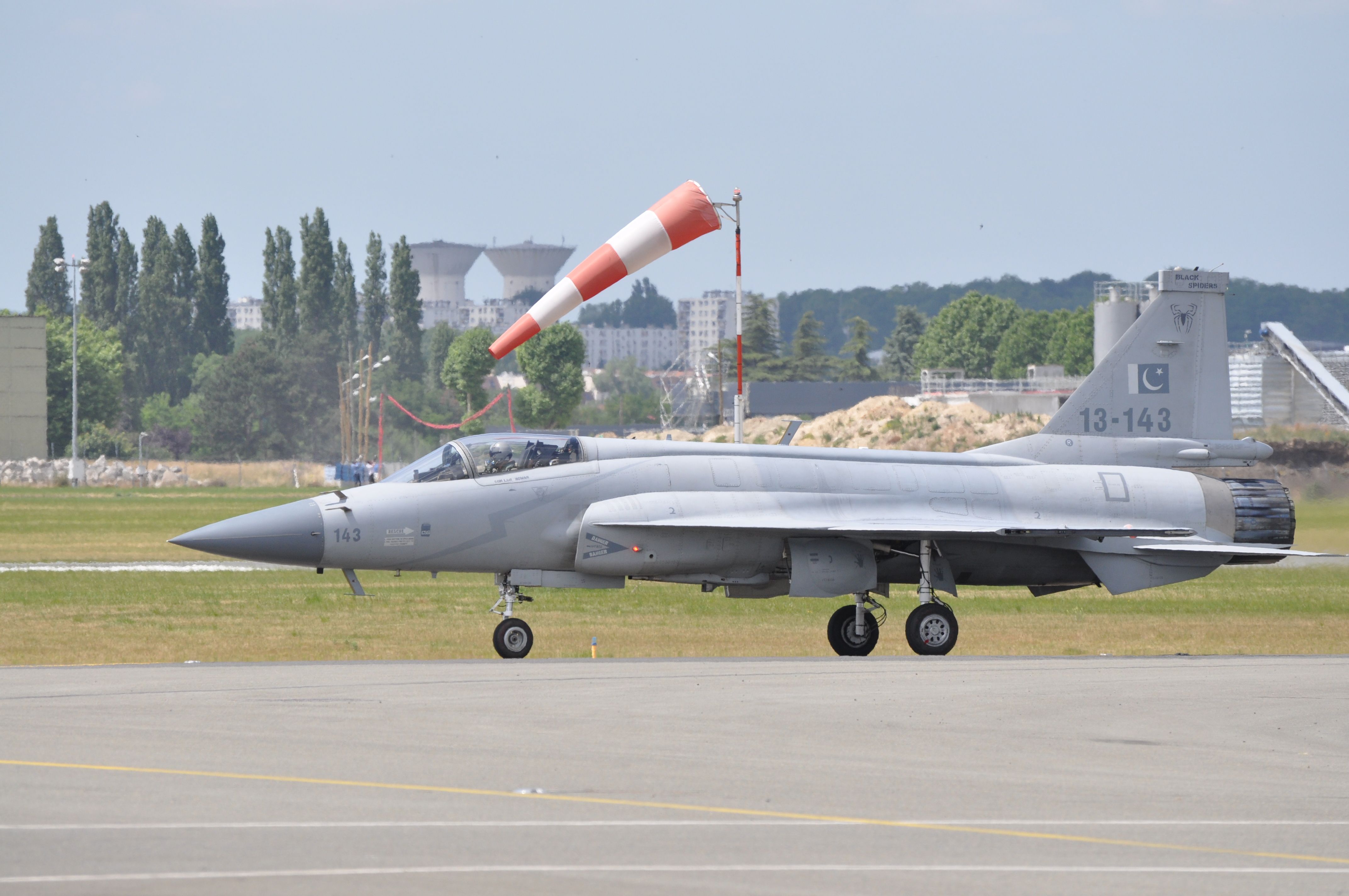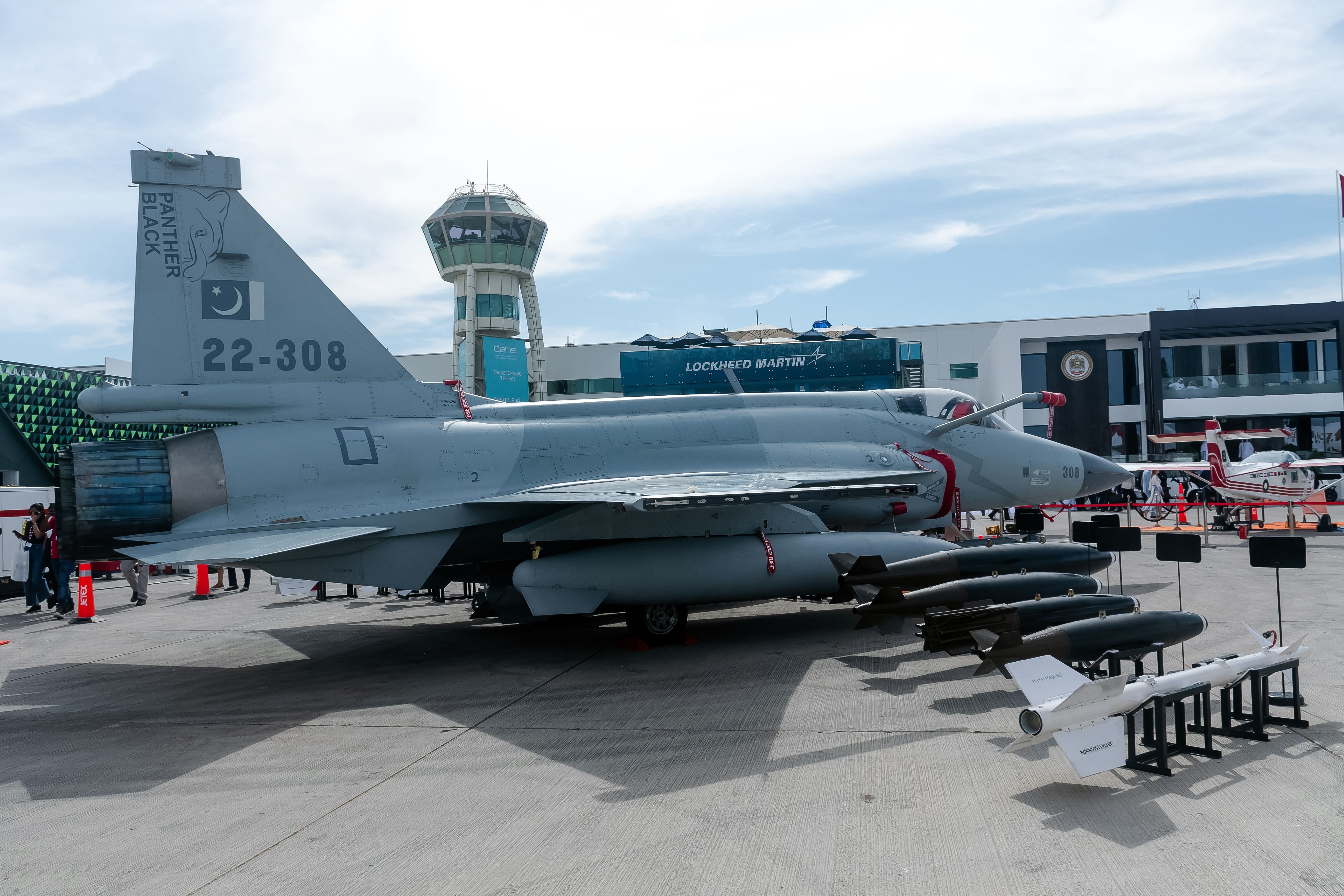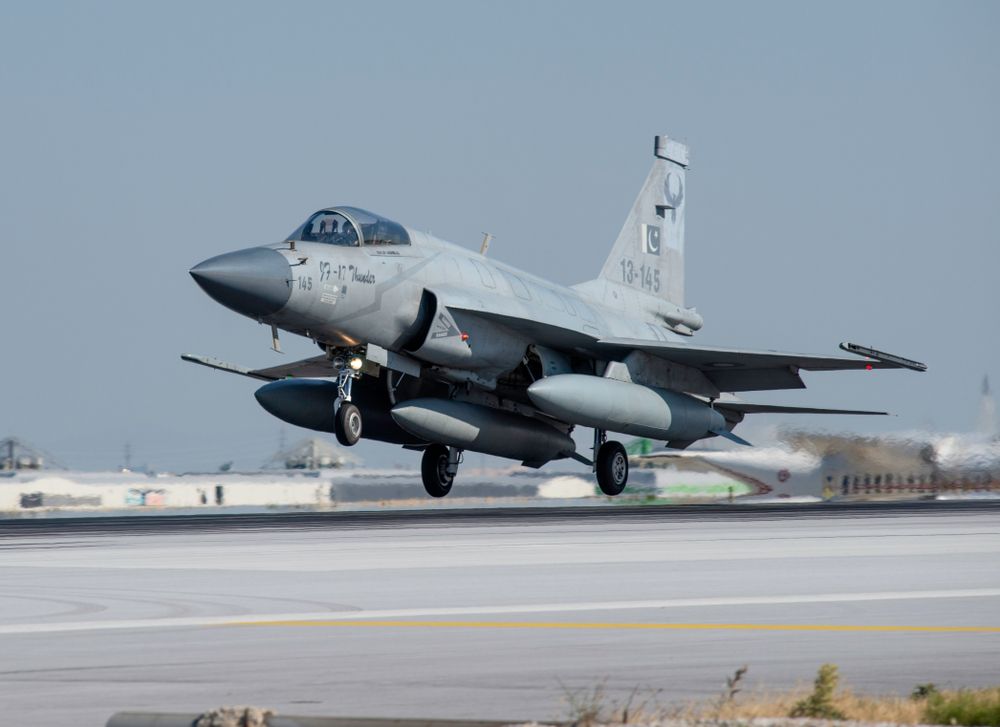Summary
- JF-17 Thunder is a joint Pakistan-China lightweight, multi-role combat aircraft, developed to replace aging third-generation aircraft.
- Despite claims of 58% Pakistani production, the majority of the aircraft is produced in China, with the final assembly in Pakistan.
- The JF-17 has faced criticism for its performance, maintenance costs, and technical issues, but it has had some limited export success.
China and Pakistan teamed up to produce a 4th-generation multi-role fighter called the JF-17 Thunder (or FC-1 by China). Successfully developing a new fighter jet is very hard, and it is common for programs to fail or result in questionable jets like Russia’s supposedly fifth-generation Su-57 Felon. So far, the JF-17 Thunder has had some operational success in low-intensity missions (such as by Pakistan on local terrorist cells and by Nigeria on militants in the north of the country). However, its performance against peer adversaries remains another question.
The JF-17 Thunder: a joint Pakistan/China jet
The JF-17 Thunder is a lightweight, single-engine, multi-role combat aircraft developed by China and Pakistan (“JF” is for Joint Fighter, referring to collaboration). China designates it the FC-1 for “Fighter China-1.” It was built to replace Pakistan’s aging fleet of A-5C, Mirage III, Mirage V, and F-7P/PG aircraft (all third-generation). The JF-17 is built for ground attack, interception, and aerial reconnaissance.
|
JF-17 Specifications |
|
|---|---|
|
Max speed: |
Mach 1.6 |
|
Max takeoff weight: |
29,762 lbs |
|
Service ceiling: |
55,500 feet |
|
Hardpoints: |
8 |
|
Combat range: |
560 miles |
|
Powerplant: |
1x Klimov RD-93 afterburning turbofan |
Pakistanis claim that 58% of the JF-17’s airframe (including its front fuselage, wings, and vertical stabilizer) is produced in Pakistan. The remaining 42% is produced in China (although the final assembly is in Pakistan). In reality, Pakistan’s 58% share comprises raw materials and production kits from China. Pakistan only manufactures some sub-assemblies like the wings. Even the ejection seat is from British-based Martin Baker.
The JF-17 Thunder entered Pakistani service in 2010 and has become the backbone and workhorse of the Pakistani Air Force, complementing its American-made F-16s. The Pakistani Air Force is forced to maintain a large amount of aircraft on a shoestring budget. Importantly, the JF-17 costs less than half the price of the F-16.
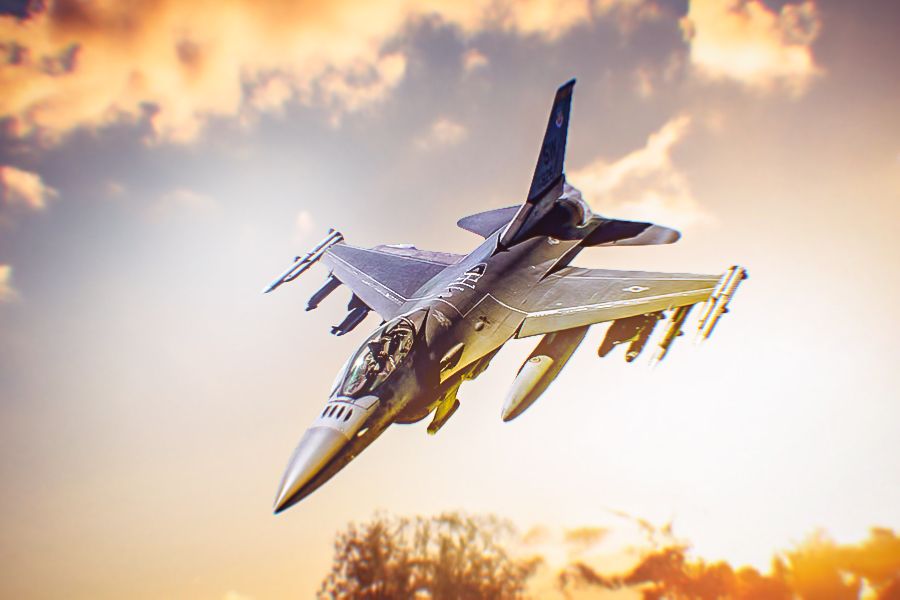
Related
Comparative Analysis: F-16 Block 70 Vs. Other 4th Generation Fighters
F-16 Block 70/72 continue to be produced for air forces around the world and are considered advanced 4.5 generation fighters.
Thunder or blunder?
According to the manufacturer Pakistani Aeronautical Complex Kamra, “It possesses excellent air-to-air and air-to-surface combat capabilities. The state-of-the-art avionics, optimally integrated sub-systems, computerized flight controls, and capability to employ latest weapons provides a decisive advantage to JF-17 over adversaries of the same class.” However, many seem to disagree and claim the aircraft is a failure.
A Pentapostagma article from 2021 claimed that the JF-17 was a failure. The article stated, “The aircraft’s capability is judged by the avionics, weapons, and engine equipping it, and the JF-17 fails to hit the mark in most areas.” It also claimed the jet had performed poorly against Indian Air Force Mirage-2000 and SU-30s in 2019.
Critics claim the low-cost fighter was produced using low-quality Chinese avionics and weapons. It is also claimed that the aircraft requires a high maintenance cost. Critics suggest the aircraft has issues with the Chinese-supplied RD-93 engines (officially built by the Russian company Klimov). Western sanctions against Russia are making it more difficult for Pakistan to work out the issues with Russia directly.
Photo: Falcons Spotters | Shutterstock
The JF-17’s indigenously developed Link-17 data link reportedly suffers from an insufficient data transfer rate and cannot be integrated with the Link-16 of Pakistan’s American-made F-16s. Poor radars, low payload capacity, and low credibility of aircraft main computers, among other issues, compound the issues.
|
Export customers |
|
|---|---|
|
Export customers: |
Nigeria, Myanmar, Azerbaijan, Iraq |
|
Potential export customers: |
Morocco, Congo, Zimbabwe, Bolivia |
|
Failed export: |
Saudi Arabia, Qatar, Argentina, Malaysia, Sri Lanka |
On June 5th, another JF-17 crashed in Pakistan. While Pakistan remained tight-lipped about the incident, the British company Martin-Baker reported it on June 11, stating, “On Wednesday, 5th June, a Pakistan Air Force JF-17 Block 2 aircraft crashed near the Jhang district. The pilot successfully ejected using the Martin-Baker PK16LE Seat.” The crash would appear to be the 5th such JF-17 crash in 13 years (Pakistan has around 150 JF-17s in service).
Pakistan has managed to export a few aircraft. One export country is Myanmar, which was forced to ground its JF-21s after technical malfunctions. The Eurasian Times reported, “Analysts and Former Myanmar Air Force Pilots said, ‘The aircraft, which are supposed to be capable of interception, ground attack, and bombing missions, have turned out to be unfit for service, and the Myanmar military lacks the technical expertise to fix the problem.'”
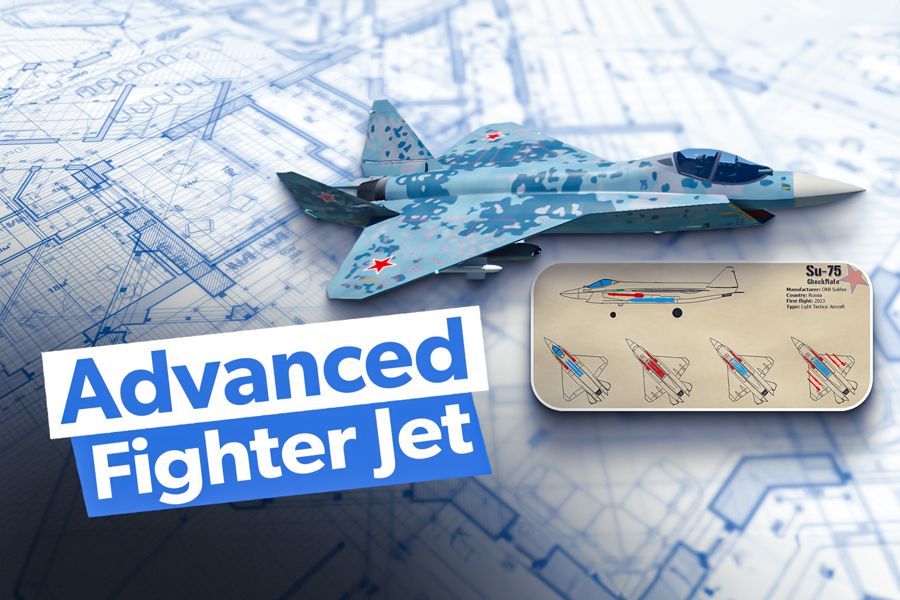
Related
Inside The Su-75 Checkmate: What To Expect From This Advanced Fighter Jet
The Su-75 has been displayed with much fanfare, but serious questions exist if the jet will ever get off the ground.
China’s military exports
The story of China’s weapons exports is complicated and often overshadowed by exports from countries like the USA, Russia, France, and the United Kingdom. While China has become a significant arms exporter, its exports are still rather limited. According to data from SIPRI, China’s share of total arms exports fell slightly from 5.9% for 2014-18 to 5.8% for 2029-23 (while Russia’s share nose-dived from 21% to 11%).
In recent years, Russian fighter exports have all but collapsed, but China’s fighter jet exports do not seem to be taking their place. Instead, other jets like the F-16, the French Rafale, and possibly the Swedish Gripen have been purchased in their stead. The reasons for China’s apparently lackluster fighter jet exports are likely complicated.
One issue could be that China’s jets have used Russian jet engines produced under license. As China may now be producing some of its own domestic engines (such as the Shenyang WS-10), this may become less of an issue in the future.
Photo: Peter R Foster IDMA l Shutterstock
Pakistan has long been a bulwark of Chinese exports and has imported a considerable amount of Chinese military equipment; one of the most notable joint military projects is the JF-17 Thunder.



